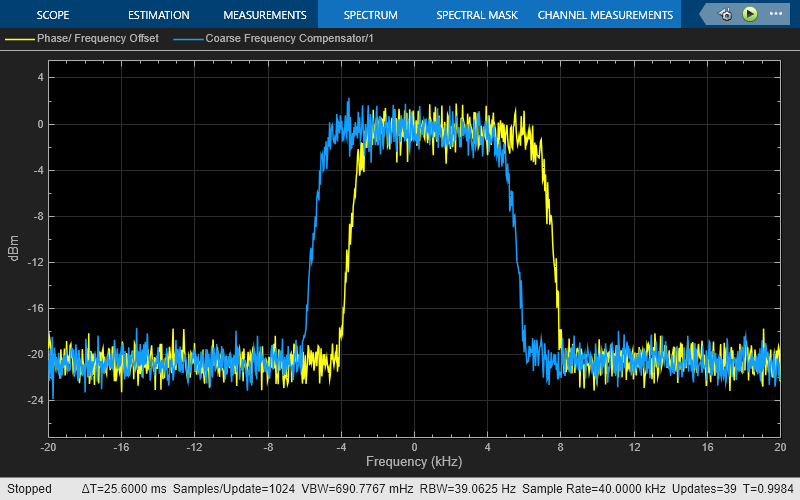Coarse Frequency Compensator
Compensate for carrier frequency offset in PAM, PSK, or QAM
Libraries:
Communications Toolbox /
RF Impairments Correction
Communications Toolbox /
Synchronization
Description
The Coarse Frequency Compensator block compensates for carrier frequency offset in QAM, 8-PSK, BPSK, OQPSK, PAM, and QPSK modulation schemes.
Examples
Ports
Input
Output
Parameters
Block Characteristics
Data Types |
|
Multidimensional Signals |
|
Variable-Size Signals |
|
Algorithms
References
[1] Luise, M., and R. Reggiannini. “Carrier Frequency Recovery in All-Digital Modems for Burst-Mode Transmissions.” IEEE® Transactions on Communications 43, no. 2/3/4 (Feb. 1995): 1169–78.
[2] Wang, Y., et al. “Non-Data-Aided Feedforward Carrier Frequency Offset Estimators for QAM Constellations: A Nonlinear Least-Squares Approach.” EURASIP Journal on Advances in Signal Processing 2004, no. 13 (Dec. 2004): 856139. https://doi.org/10.1155/S1110865704403175.
[3] Nakagawa, Tadao, et al. “Non-Data-Aided Wide-Range Frequency Offset Estimator for QAM Optical Coherent Receivers.” Optical Fiber Communication Conference/National Fiber Optic Engineers Conference 2011, OMJ1. OSA, 2011. https://doi.org/10.1364/OFC.2011.OMJ1.
[4] Olds, Jonathan. Designing an OQPSK demodulator.

